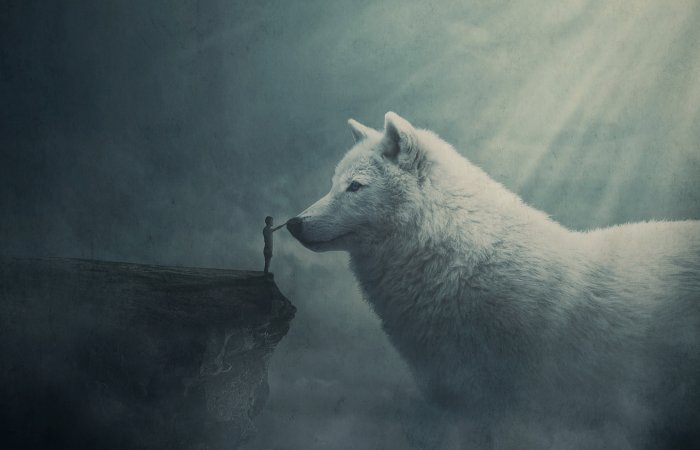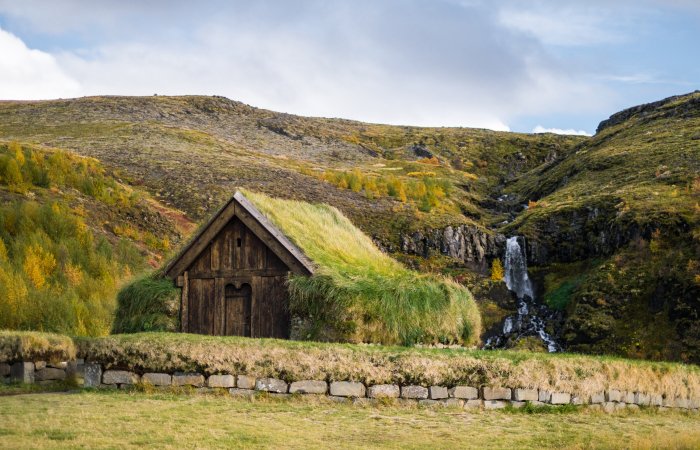Hamingja – Norse Guardian Spirit Bringing Good Luck From Generation To Generation
Ellen Lloyd - AncientPages.com - According to Norse beliefs, our world is inhabited by numerous spirits that play a crucial role in human lives. Norse spirits were revered and, at times, feared.
Land spirits, known as Landvættir, were closely tied to specific locations. Old Icelandic literature suggests that these spirits were invisible to the naked eye but could be perceived by individuals possessing second sight. Landvættir were believed to bring good fortune and prosperity to their worshippers. Additionally, they possessed knowledge of the future and could guide those who sought their counsel. Land spirits protected individuals and families who gave them offerings.
Although invisible to the naked eye, these guardian spirits could manifest themselves in various forms, often by shape-shifting into animals. This phenomenon allowed them to reveal their presence and establish a connection with the individuals they guided.
Norse Guardian Spirits
Like many ancient societies, the Norse culture embraced the belief in the existence of a soul. Additionally, they perceived that each individual was accompanied by an unseen guardian throughout their life's journey. This guardian spirit was known as the "vörðr," and it can be best described as a personal warden or caretaker spirit. Interestingly, on some occasions, the vörðr could become visible, manifesting as a small light or taking on the shape of the person it guarded. Those with heightened senses were believed to have the ability to perceive the watcher spirits of others.
It happened often that Fylgja visited a person in a dream. The guardian spirit came to deliver an important message. Credit: Adobe Stock - psychoshadow
The Norse concept of Fylgja offers an intriguing perspective on the human soul and its spiritual guardianship. Fylgja was believed to be a soul that simultaneously acted as a guardian spirit and a psychic counterpart to an individual. This notion suggests that a person may possess multiple souls, with one capable of departing from the physical body and manifesting itself either as a duplicate of the individual or in an animal form. Remarkably, this manifestation could occur during both dreams and wakefulness.
Over time, this particular soul was perceived to evolve into an independent entity, albeit still associated with its original owner. Notably, Fylgja appeared before its owner's death, perhaps as a harbinger of the impending transition.
Interestingly, a person's power and status were thought to influence the number of fylgjur they possessed. The more powerful the individual, the more fylgjur they were believed to have.
Hamingja – A Norse Symbol Of Good Luck And Fortune
The Hamingja is another intriguing Norse guardian spirit. Unlike land spirits that traveled across the sea to protect individuals, the Hamingja shared a unique connection with a specific family or clan. The Hamingja symbolized luck or fortune that could be passed down from generation to generation. This spiritual entity represented the inherited fortunes and blessings bestowed upon a particular lineage.
Hamingja's influence on the family's well-being was directly tied to their behavior and lifestyle choices. Positive actions and virtuous living would strengthen the Hamingja, bringing blessings and prosperity, while negative or unethical conduct would weaken it, leading to misfortune.
Whether commendable or reprehensible, any member's actions could impact the family's collective Hamingja and their reputation and fortunes for generations. Transgressions or "stains" on the family's honor were taken seriously, as they could tarnish their standing and bring lasting consequences.
Hamingja can take on a different form or likeness from its own. The word "hamr" can sometimes carry the same meaning, implying an external shape or appearance. However, in some cases, the notion of physical form is disregarded, and the supernatural being is simply referred to as a person's "idea" or "thought" (hugr).
When these tutelary spirits were associated with a particular family or kin, they were often collectively referred to as "kynfylgjur" or "oettarfylgjur" (kyn meaning "kin" or "family"). These spirits were believed to appear in dreams, manifesting as the so-called "draumkonur.
A Hamingja could also be a a huge woman resembling a Valkyrie or one of the Disir, acting as a guardian spirit to the family and as a protector to a chosen one in each generation.
A Hamingja was part of the family, generation after generation. If the individual she guarded moved, she followed to the new location. Credit: Adobe Stock - shatkhin
It was even possible to lend one's Hamingja to another person.
One notable example is found in a late saga about King Harald Fairhair. When the King sent his poets on a dangerous quest, they begged him to grant them his Hamingja for the journey. Despite his anger, Harald consented to their request, recognizing the importance of this spiritual aid.
A similar story is told of Hjalti Skeggiason, an Icelandic chieftain who supported Gizurr the White's efforts to introduce Christianity in Iceland at the Althing in 1000. Facing a difficult journey, Skeggiason asked King Olaf II to lend him his Hamingja, unwilling to embark alone without this protective force.
The Norse literature even attributes this power to lend one's Hamingja to St. Olaf himself. On one occasion, he promised his men, "Be sure that I will grant my hamingja to you and to all the party," demonstrating the belief that this spiritual essence could be shared and bestowed upon others.
The concept of "Hamingja" in Norse mythology is an intriguing one, deeply embedded in the sagas and literature of that era. It is worth noting that Hamingja is sometimes used interchangeably with Fylgja, and both are supernatural entities closely associated with a person's luck or fortune. In some cases, they are believed to represent or personify an individual's luck or fate. These guardian spirits reflect the Norse belief in unseen forces that shape one's destiny and fortunes in life.
Written by Ellen Lloyd - AncientPages.com
Copyright © AncientPages.com All rights reserved. This material may not be published, broadcast, rewritten or redistributed in whole or part without the express written permission of AncientPages.com
Expand for referencesEllis Davidson - Myths And Symbols In Pagan Europe
Claude Lecouteux - Encyclopedia of Norse and Germanic Folklore, Mythology, and Magic
Ellen Lloyd - Norse Watcher Spirit Vörðr Followed A Person From Birth To Death - AncientPages.com
Ellen Lloyd - Fylgja – Norse Guardian Spirit Was Deeply Respected - AncientPages.com
Sommer, Bettina Sejbjerg. "The Norse Concept of Luck." Scandinavian Studies 79, no. 3 (2007): 275–94.
Peter Andreas Munch - Legends of Gods and Heroes
Bryan, Eric Shane – The Fylgjur Of Iceland: Attendant Spirits And A Distorted Sense of Guardianship. ." In Icelandic Folklore and the Cultural Memory of Religious Change, 67–88. Arc Humanities Press, 2021
Jakob Benediktsson.- Landnámabók som historisk kilde (1969)Kongelige Nordiske
Oldskriftselskab - Fornmanna sögur: Saga Ólafs konúngs Tryggvasonar
More From Ancient Pages
-
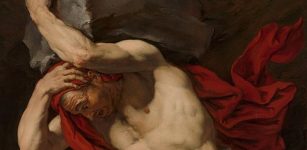 Why Did God Zeus Give King Sisyphus An Eternal Punishment?
Featured Stories | Sep 2, 2019
Why Did God Zeus Give King Sisyphus An Eternal Punishment?
Featured Stories | Sep 2, 2019 -
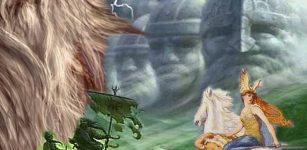 Valhalla – The Hall Of The Fallen Where Viking Hero Warriors ‘Einherjar’ Dwell After Death
Featured Stories | Mar 11, 2018
Valhalla – The Hall Of The Fallen Where Viking Hero Warriors ‘Einherjar’ Dwell After Death
Featured Stories | Mar 11, 2018 -
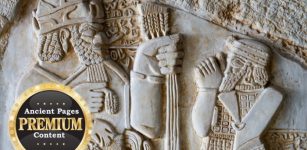 Odd Ancient Dwellings Of The Snake People – Clues From Biblical Lands – Part 2
Biblical Mysteries | Sep 10, 2020
Odd Ancient Dwellings Of The Snake People – Clues From Biblical Lands – Part 2
Biblical Mysteries | Sep 10, 2020 -
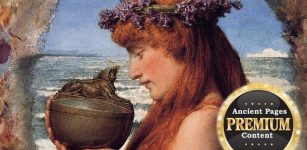 The Opening Of Pandora’s Box May Have Been A Real Event
Featured Stories | Jun 22, 2021
The Opening Of Pandora’s Box May Have Been A Real Event
Featured Stories | Jun 22, 2021 -
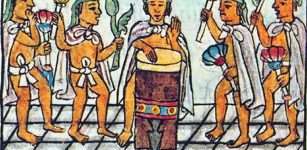 Daily Life Of Télpochcalli Students Of The Aztec Empire Was A Challenge
Ancient History Facts | Apr 20, 2020
Daily Life Of Télpochcalli Students Of The Aztec Empire Was A Challenge
Ancient History Facts | Apr 20, 2020 -
 Stones Of Rajajil – Sophisticated Road Markers Or An Ancient Astronomical Observatory?
Civilizations | May 21, 2017
Stones Of Rajajil – Sophisticated Road Markers Or An Ancient Astronomical Observatory?
Civilizations | May 21, 2017 -
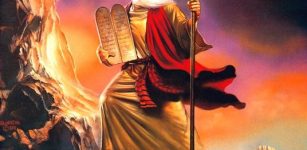 The Controversial History Of Moses – Who Was He Really?
Biblical Mysteries | Sep 13, 2015
The Controversial History Of Moses – Who Was He Really?
Biblical Mysteries | Sep 13, 2015 -
 How Emma Of Normandy Risked Her Life To Save England
Featured Stories | Mar 20, 2021
How Emma Of Normandy Risked Her Life To Save England
Featured Stories | Mar 20, 2021 -
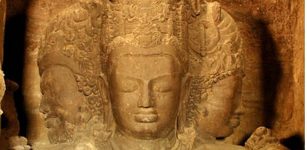 Ancient Complex Of Elephanta Caves In India
Featured Stories | Dec 27, 2016
Ancient Complex Of Elephanta Caves In India
Featured Stories | Dec 27, 2016 -
 3,000-Year-Old History Of Tea: World’s Second Most-Consumed Drink After Clean Water
Ancient Traditions And Customs | May 10, 2019
3,000-Year-Old History Of Tea: World’s Second Most-Consumed Drink After Clean Water
Ancient Traditions And Customs | May 10, 2019 -
 Mysterious 2,000-Year-Old Disco Colgante – Unknown High-Tech Device, Representation Of A Spiral Galaxy Or Something Else?
Artifacts | Nov 20, 2020
Mysterious 2,000-Year-Old Disco Colgante – Unknown High-Tech Device, Representation Of A Spiral Galaxy Or Something Else?
Artifacts | Nov 20, 2020 -
 Michelangelo’s Hidden Secrets Under The Medici Chapel
Featured Stories | Jul 16, 2019
Michelangelo’s Hidden Secrets Under The Medici Chapel
Featured Stories | Jul 16, 2019 -
 Ask And Embla: First Human Pair Created By Powerful God Odin And His Two Brothers
Featured Stories | Sep 24, 2016
Ask And Embla: First Human Pair Created By Powerful God Odin And His Two Brothers
Featured Stories | Sep 24, 2016 -
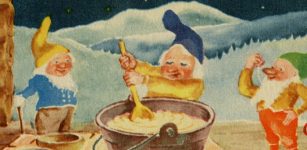 How Norwegians Expressed Resistance Against Nazi Occupation Using Christmas Cards
Featured Stories | Dec 21, 2023
How Norwegians Expressed Resistance Against Nazi Occupation Using Christmas Cards
Featured Stories | Dec 21, 2023 -
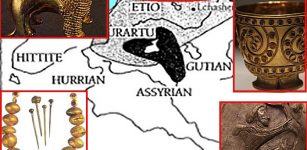 Trialeti Culture: Ancient Caucasian People Who Still Hold Their Secrets
Civilizations | Jul 8, 2017
Trialeti Culture: Ancient Caucasian People Who Still Hold Their Secrets
Civilizations | Jul 8, 2017 -
 Never Explained Mystery Of Star-Shaped Towers Of The Himalayas
Featured Stories | Nov 24, 2014
Never Explained Mystery Of Star-Shaped Towers Of The Himalayas
Featured Stories | Nov 24, 2014 -
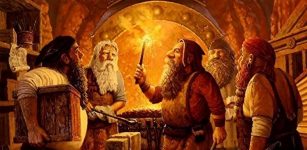 Brokkr And Eitri – Norse Dwarves Who Fashioned Magical Artifacts For The Gods
Featured Stories | Aug 19, 2019
Brokkr And Eitri – Norse Dwarves Who Fashioned Magical Artifacts For The Gods
Featured Stories | Aug 19, 2019 -
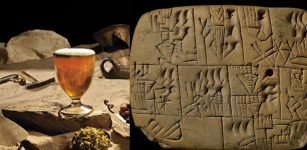 World’s Oldest Paycheck Reveals Ancient Sumerian Workers Were Paid In Beer
Ancient History Facts | Nov 22, 2018
World’s Oldest Paycheck Reveals Ancient Sumerian Workers Were Paid In Beer
Ancient History Facts | Nov 22, 2018 -
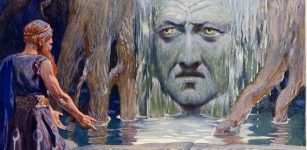 Well Of Urd (Urdarbrunn): Abode Of Fate Goddesses And Powerful Symbol In Norse Beliefs
Featured Stories | Dec 17, 2022
Well Of Urd (Urdarbrunn): Abode Of Fate Goddesses And Powerful Symbol In Norse Beliefs
Featured Stories | Dec 17, 2022 -
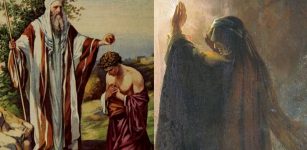 Witch Of Endor – A Biblical Ghost Story Or A Woman With Supernatural Powers?
Biblical Mysteries | Jul 9, 2021
Witch Of Endor – A Biblical Ghost Story Or A Woman With Supernatural Powers?
Biblical Mysteries | Jul 9, 2021


